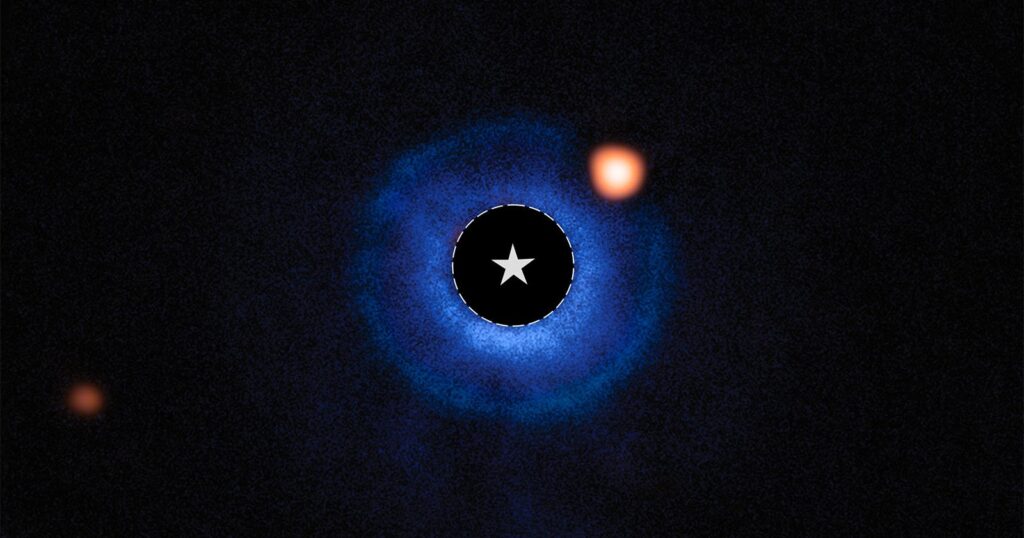
WASHINGTON, D.C. – In a groundbreaking achievement, NASA’s James Webb Space Telescope has captured its first direct image of an exoplanet, marking a significant milestone in space exploration.
Breaking: Webb’s Historic Discovery
The image, if confirmed, would represent the first time the Webb Telescope has directly imaged a planet outside our solar system. This discovery could also be the lightest exoplanet ever detected using such an imaging technique.
Immediate Impact
An international team of researchers utilized Webb’s Mid-Infrared Instrument (MIRI) to capture the image of TWA 7, a young star located nearby. The team identified a planet-like object, TWA 7 b, with a mass comparable to Saturn, orbiting the star. The findings were published in the prestigious journal Nature this week.
“Using MIRI’s coronagraph, the researchers carefully suppressed the bright glare of the host star to reveal faint nearby objects. This technique, called high-contrast imaging, enables astronomers to directly detect planets that would otherwise be lost in the overwhelming light from their host star,” NASA explains.
Key Details Emerge
After employing imaging processing techniques to subtract residual starlight, the team identified a faint infrared source near TWA 7. Extensive analysis ruled out the possibility of the object being within our solar system, and the likelihood of it being a background galaxy was deemed “very small.”
“The evidence strongly points to the [infrared] source being a previously undiscovered planet,” NASA says.
Industry Response
The newly discovered infrared source is located in a gap within one of the three dust rings surrounding TWA 7. While ground-based telescopes have observed the star before, Webb’s ability to block out starlight allows it to detect faint nearby objects more effectively.
TWA 7 b’s characteristics, such as its brightness, color, distance from the star, and position within the ring, align with theoretical predictions for a young, cold, Saturn-mass planet that is likely influencing the surrounding debris disk.
Expert Analysis
Anne-Marie Lagrange, a CNRS researcher at the Observatoire de Paris-PSL and Université Grenoble Alpes in France, and lead author of the research paper, explains, “Our observations reveal a strong candidate for a planet shaping the structure of the TWA 7 debris disk, and its position is exactly where we expected to find a planet of this mass.”
Mathile Malin from Johns Hopkins University and the Space Telescope Science Institute (STScI) in Baltimore, Maryland, adds, “This observatory enables us to capture images of planets with masses similar to those in the solar system, which represents an exciting step forward in our understanding of planetary systems, including our own.”
Background Context
The discovery of TWA 7 b builds on the Webb Telescope’s mission to explore the universe’s earliest galaxies and distant worlds. The timing of this discovery is particularly significant as it showcases the telescope’s advanced capabilities in detecting exoplanets and contributing to our understanding of planetary formation and evolution.
What Comes Next
Looking ahead, researchers aim to conduct further studies to confirm the planet’s existence and gather more data on its characteristics. This breakthrough paves the way for future discoveries and deepens our understanding of the universe’s complexities.
Image credits: NASA, ESA, CSA, Anne-Marie Lagrange (CNRS, UGA), Mahdi Zamani (ESA/Webb)






